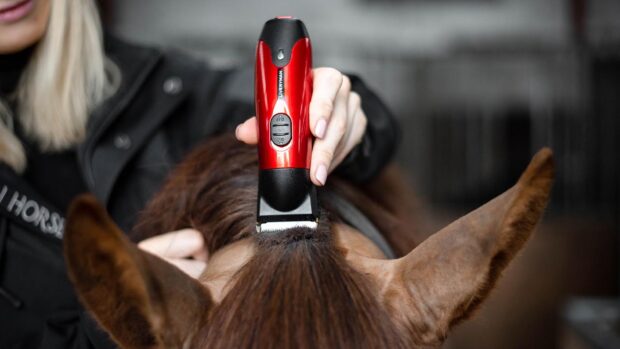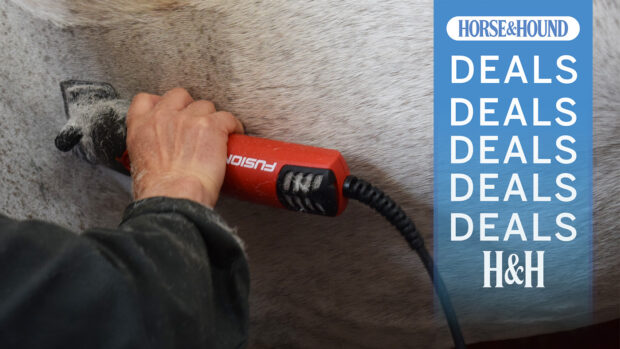Watch the third and final episode of H&H’s clipping masterclass video series.
The video has expert advice from Mary King and her groom Jodie Summers as they clip Mary’s home-bred advanced event horse Kings Temptress.
Topics covered include choosing the right clip for your horse, drawing the lines, producing a smooth appearance, avoiding damage to the mane and tail, clipping the horse’s head including the ears, clipping legs, clipping dos and don’ts, and care of clippers after use.
Also available is epsiode one: clipping basics and episode two: clipping challenges.
Clipping tips
1. Choosing the right clip for your horse:
- Mary King’s event horses are hunter clipped. This takes off all the hair on their body, including the head and just leaves the legs and a patch under the saddle.
- Mary King’s younger horses have a blanket clip. This leaves the hair on the horse’s back, in a similar shape to an exercise blanket, but takes all the hair off the neck, the lower shoulder, belly and a strip across the bottom of the hind quarters and up to the base of the tail. This can be combined with a half head, up to the check bones, or a full head.
- Horses in light work, such as hacking and occasional schooling, may cope fine with just a trace clip, which is similar to a blanket but only takes the hair off the lower part of the neck, or even left unclipped.
- Consider your horse’s type and work levels when choose the right clip. Do not take off more hair than is necessary.
2. In order to produce a clip with even, level lines use chalk or saddle soap to mark out where you intend to clip. This allows you to adjust your lines before starting to clip. Remember once it’s been clipped off you can’t stick it back on!
3. To get a smooth finish, use long strokes and overlap each stroke. Do not force the clippers through the coat — allow them to pass through steadily so the coat is clipped easily. If the blades are not cutting the coat then they may need sharpening. When clipping around whorls use the clippers in various directions to remove all the hair.
4. Bandage the top of the tail and plait the bottom to avoid any accidental damage from the clippers. The mane can either be loosely plaited or put into bands to keep it out of the way.
5. Mary King’s tips on how to clip the horse’s head:
- Always make sure the blades are cool before clipping the head
- Mary prefers to use large clippers for most areas of the head, and trimmers for the ears and nose
- Go gently and be very careful around the bony areas of the face
- Place your hand over the eye when clipping close to it to protect it and help the horse to settle
- If the horse is quiet it is easier to clip the head if the headcollar is round the neck, rather than on the head
- Be careful when clipping around the forelock. You don’t want to slip and chop a section of the forelock off by mistake!
- Move the loose skin on the face around with your free hand so you can get the clippers into all the nooks and cranies
6. Mary King leaves her horses’ legs unclipped, but if you have a horse that needs its legs clipping you may need to use a more coarse set of blades to get through the thicker hair around the horse’s fetlocks.
7. Clipping dos and don’ts:
- Do make sure the clippers are correctly tensioned. This is different for each make of clipper so refer to your handbook.
- Do oil your blades every 5 to 10 mins and check they aren’t getting too hot. If they are getting hot either remove the blades and put on a new set, or just put the clippers aside and allow them to cool.
- Don’t clip when your horse is expecting to be fed or turned out as they are likely to be unsettled at these times.
- Do have rugs to hand to place over the horse while he is being clipped.
- Don’t dip your blades in water or paraffin to cool them down. This is dangerous!
8. Caring for your clippers:
- Brush off all the loose hairs
- Remove the tension set and the blades
- Clean the blades with a brush and/or rag and put them away. Do not put them back on the handset while in storage
- Clean the handset and pack away carefully
- Store your clippers in a cool, dry place
- Send your clippers and blades away at the end of the clipping season to be serviced and sharpened ready for the following year


